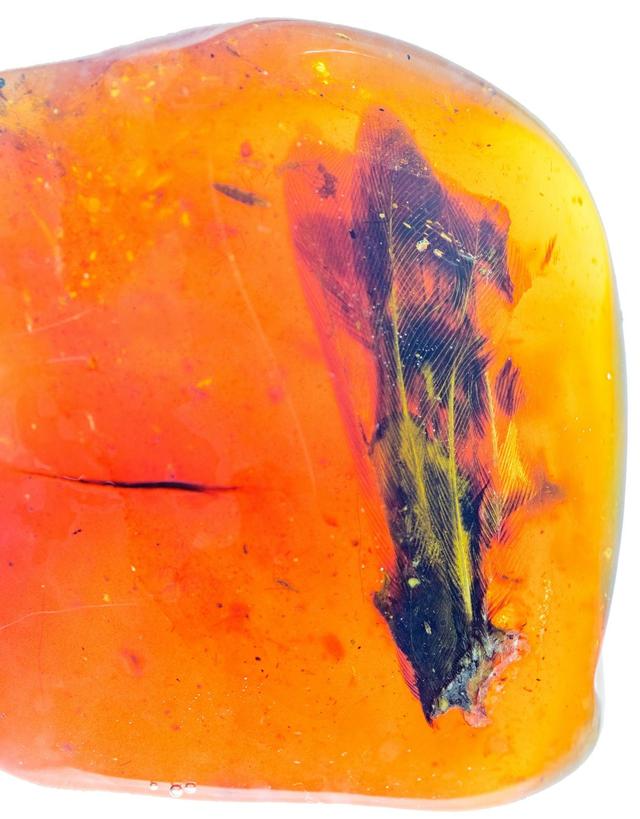Researchers discover unusually large bird wing in dinosaur-era amber


BEIJING -- An international team of researchers announced Monday that they have discovered an amber containing parts of an "unusually large" ancient bird wing dating back around 99 million years.
The bird wing found in Hukawng Valley in northern Myanmar, an area rich in amber fossil discoveries, is expected to help enrich the understanding of the size of ancient birds, according to Xing Lida, a paleontologist from the China University of Geosciences.
The amber, 5.3 cm long and weighing 79.4 grams, contains a fragmentary right wing with length measures less than a centimeter. It is thought to belong to enantiornithines, a group of extinct birds commonly found in the Cretaceous Period, Xing said.
Some feathers have also been preserved, with the longest at 37 mm. "It likely belonged to an individual that was about 10 cm long from its snout to vent," said Xing. "It could be a large enantiornithine or a new species of enantiornithines."
The results of the research were published in Cretaceous Research.
- 'Silver trains' gain speed in China's booming elderly travel market
- China sees over 330 million cross-border trips in H1 2025
- Foreign arrivals to China continue to surge in H1
- China champions international ties in cutting-edge research
- Macao SAR govt, liaison office of central govt firmly support decision of Legislative Assembly election commission
- Preliminary exam for highest Tibetan Buddhism degree held in Xizang





































